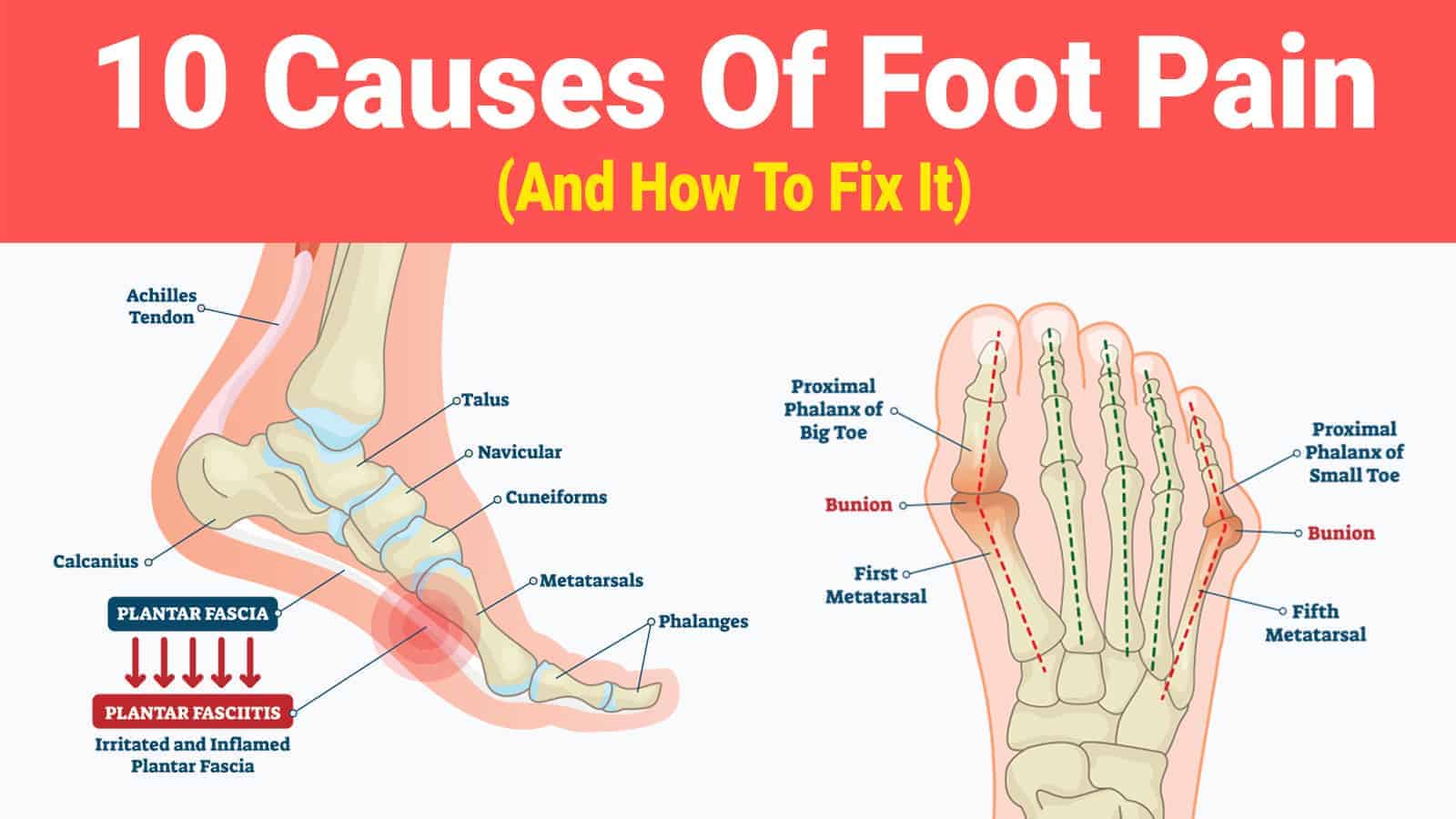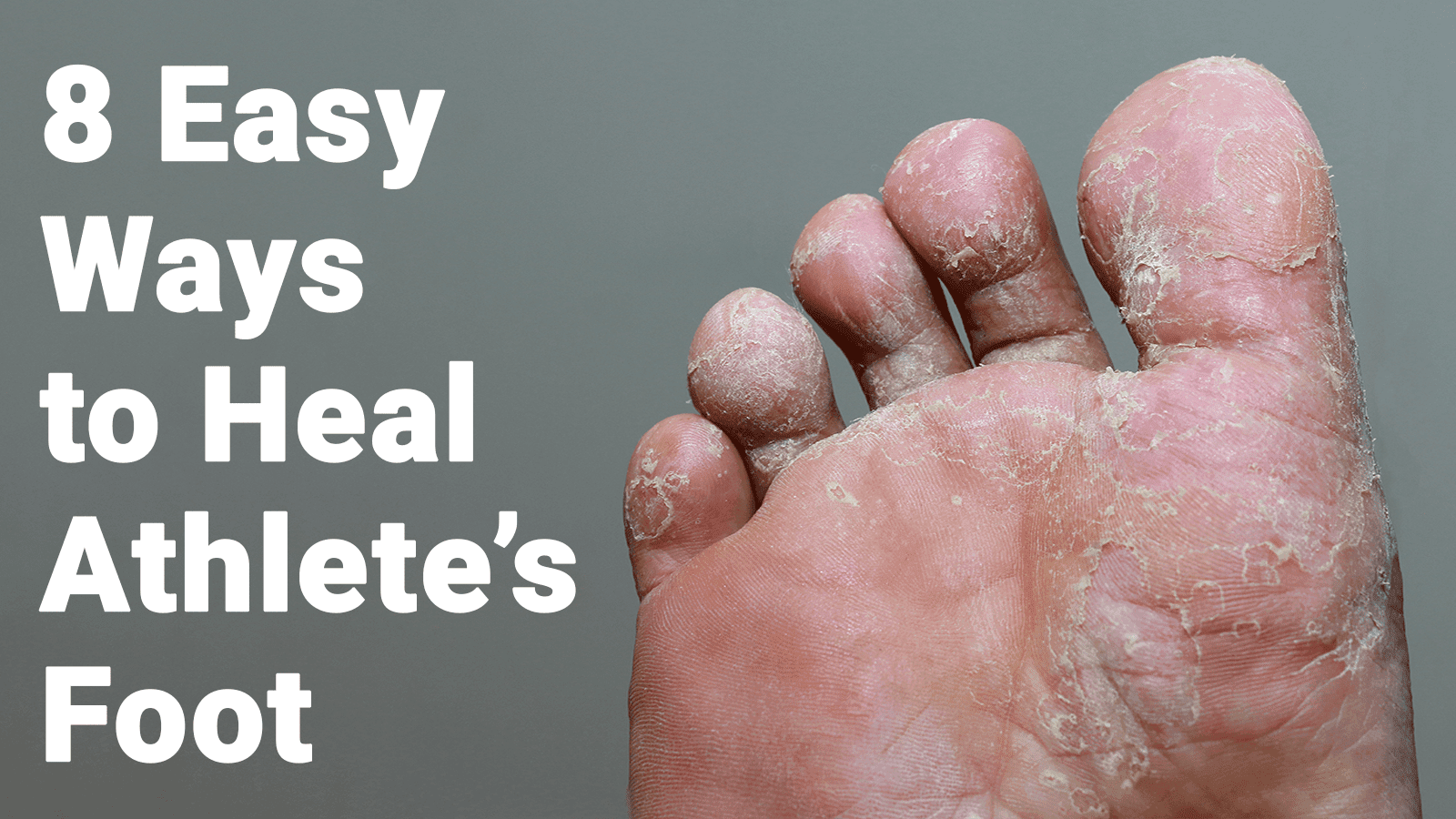Foot pain can be difficult to live with as it can interfere with your life in multiple ways. The pain may consume your thoughts, or it may make it difficult to be physically active. Sometimes, the pain may even seem unbearable.
While foot pain is a serious matter, you don’t have to suffer all the time. If you are able to figure out the foot pain causes (self-diagnosed or diagnosed by a doctor), you can also figure out how to fix it and avoid the pain in the future. Even if the pain cannot be completely avoided you can at least find a way to minimize the effects.
Determining the cause of your foot pain may require a diagnosis, simply because there are so many possibilities. The pain may be caused by something as simple as an ingrown toenail, or it could be something more serious such as arthritis. Either way, the diagnosis is essential in figuring out how to fix it.
Foot Pain Causes
1. Plantar fasciitis
Plantar fasciitis occurs when the band of tissue on the bottom of your foot becomes inflamed due to a small tear. It causes a stabbing pain in your heel that may ease when you begin moving, but will likely return after you have been standing or walking for a while.
This is a common injury for runners and ballet dancers, but it can also occur when you wear shoes that do not offer enough support during extended periods of activity. Plantar fasciitis may also affect those with flatfeet, those who walk on their tip-toes, and anyone who is on their feet most of every day.
2. Arthritis
There are actually quite a few different types of arthritis that can affect your feet. Each of them can cause foot pain, and they all also require medical attention. These types include:
- Gout – Causes severe pain and swelling of your big toe as a result of injury or sickness.
- Osteoarthritis – When the cartilage that protects the ends of bones begins to breakdown.
- Psoriatic arthritis – Your toenails may thicken and pits may develop. Eventually the nail will separate from the nail bed.
- Reactive arthritis – Causes inflammation and pain due to a rash on the bottom of your feet.
- Rheumatoid arthritis – Causes pain in the foot because it affects the joints in your feet, causing bunions, corns, claw toe, or hammer toe.
3. Bone spurs
Along the edges of the bones in your feet you may develop osteophytes (bone spurs), which are abnormal pieces of bone that stick out, commonly found where two bones come together.
Oftentimes, bone spurs happen as a result of osteoarthritis because the cartilage on the ends of your bone breaks down. The bone spurs are your body’s attempt at repairing the cartilage. These uncomfortable bone protrusions may go unnoticed for a while, but other times they cause severe pain and a loss of motion in the joints of your feet.
4. Plantar warts
Plantar warts typically develop on your heels and are abnormal growths on your feet. They may grow outward and appear as a tiny bump on the skin, or they can grow inward and you will notice a callus on your foot, instead.
A virus called HPV causes plantar warts, and you can contract the virus by walking around barefoot in a locker room or pool area. These warts do not usually require medical attention, but if they are causing pain and you want them removed you can seek professional treatment or buy a kit at the store for wart removal.
5. Bunions
These bony bumps on the side of your foot near your big toe are somewhat common and happen when your big toe is regularly pushed against your second toe. The joint at the base of your big toe gets abnormally large, protrudes outward, and can be very painful.
Bunions can develop if you wear shoes that are too tight for extended periods of time, or they can develop due to genetics. Other ways that bunions occur is through abnormal stress on your feet or because of arthritis. The only way to remove bunions is to have surgery, but it isn’t always medically necessary.
6. Tarsal tunnel syndrome
If you are experiencing foot pain, tingling, or numbness near the sole of your foot or on the inside of your ankle, you may have tarsal tunnel syndrome. This may occur due to flatfeet, varicose veins, injuries, abnormal growths, or diabetes.
You may be able to treat tarsal tunnel syndrome at home by resting and keeping your foot elevated. If that doesn’t work, you may need to have medication prescribed by a doctor. On rare occasions, you may need to have surgery to fix it.
7. Ingrown toenail
When the edge of your toenail grows into your skin you will experience pain, inflammation, and possibly infection. Normally, you won’t need medical attention to relieve an ingrown toenail, but if it becomes infected or if you have diabetes, you should see a doctor.
You can avoid getting an ingrown toenail by taking the following precautions:
- Wear shoes that are not tight on your toes.
- Cut your toenails so that they match up with the tips of your toes to ensure protection.
- Wear protective footwear.
8. Tendinitis
When a tendon in your foot becomes inflamed or irritated it will likely cause pain and tenderness in the area. In your foot, it will likely occur near your heel and is commonly referred to as Achilles tendinitis.
If you are dealing with tendinitis in your foot, it can usually be healed by resting your foot for a while and by participating in physical therapy. To ease the pain during the healing process, you can take painkillers. If the tendinitis has been left untreated for too long and becomes more serious it can cause your tendon to burst, which can only be treated with surgery.
Tendinitis can be self-diagnosed, and you should look for minor swelling in the area, tenderness, and you will notice pain when moving your foot. You only need to see a doctor if the symptoms don’t go away after a couple of days.
Symptoms
This condition typically occurs when you do the same movement repeatedly. If your career or favorite hobby includes using the same tendon many times over, this injury is likely to happen. The older you are, the more likely you are to develop this injury, as well, as your tendons aren’t as strong as they once were. Go to the website healthcreeds to know more about this injury.
9. Bursitis
When the bursae (sacs filled with fluid to protect bones, tendons, and muscles) in your feet become inflamed, you may experience extreme pain. It normally occurs from doing repetitive motions on a regular basis, but it can also occur due to injury. Conditions such as arthritis, infection, and bunions can often lead to bursitis, as well.
The best way to treat bursitis is by resting the affected area and being more careful to avoid trauma in the future. With rest, bursitis normally clears up in a couple of weeks, but it will likely come back regularly.
You can help yourself avoid bursitis by taking special care of your body while working if your job requires you to do the same motions repeatedly. You should also make sure you are bending, lifting, and doing other exerting activities properly and with the correct form. Taking breaks, exercising, stretching, and warming up before activities can also prevent bursitis from occurring.
10. Flatfeet
When the arches of your feet are flat and the bottom of your entire foot touches the ground, you have flatfeet. This is a common condition and may or may not cause pain or swelling. It can happen due to normal stress of your feet due to age, being overweight, after an injury, or simply because you never developed arches when you were a child.
The pain caused by flatfeet is usually in the heel of your foot or near where the arch should be. Activity usually makes the pain worse, and you should discontinue the activity if you begin to notice pain.
How To Fix Foot Pain
Figuring out how to fix the pain depends on the foot pain causes. Some of the suggestions for preventing or stopping the pain are the same for many of the conditions, however. You may be able to fix the pain by taking the following measures:
- Switch up your activities regularly so you can prevent repeated stress to the same tendons.
- If you notice pain while exercising or playing a sport, stop playing and rest that area of your body.
- Focus on your technique when exercising or playing sports. If you are not doing the activity correctly, it can cause serious problems for your body.
- Stretch before and after exercise or sports.
- Practice safe ergonomics at your job.
- Have surgery to remove excess bone growth or other abnormalities.
- Check for ingrown toenails and remove if necessary.
- Get an expert opinion from your doctor. This isn’t always necessary, but if the pain will not go away on it’s own or if you have diabetes, it is likely necessary.
- Wear supportive footwear.
Final Thoughts On Food Pain and How To Fix It
Foot pain can cause so many problems for you, and it is so important to fix it before it interferes in a major way. Sometimes, the pain may require medical attention. Other times, as long as you treat it early enough, you can treat the problem at home.
Either way, it is important to determine the cause of your pain, and then find a way to fix it. There are many different foot pain causes, but you can likely narrow down the issue and figure it out for yourself. Otherwise, seeking a professional opinion may be beneficial.


















